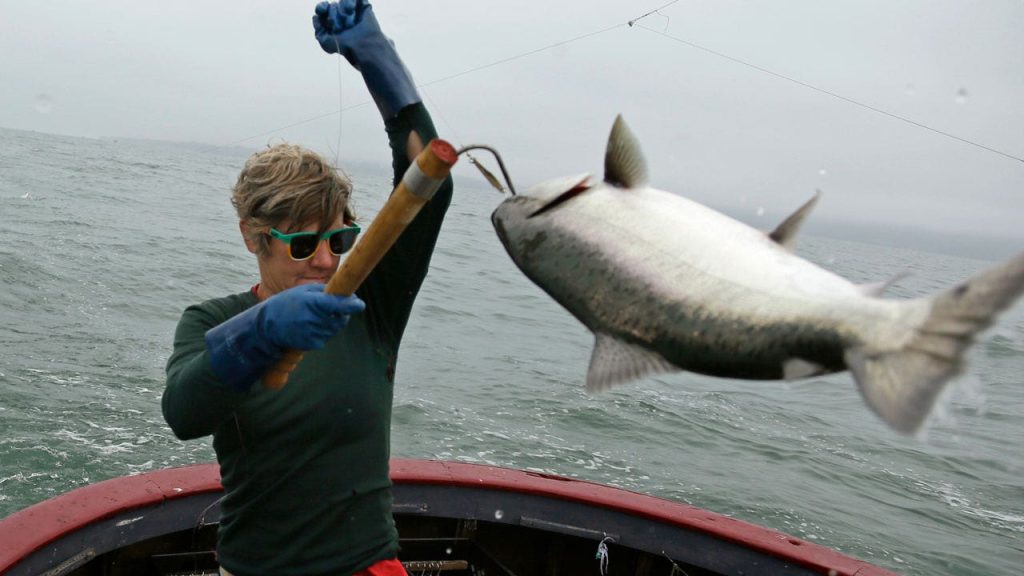Federal fishery managers have voted to cancel all commercial and recreational salmon fishing off the coast of California for the second year in a row, marking only the fourth time in state history that such a drastic step has been taken. The decision was made to protect California’s dwindling salmon populations, which have been negatively impacted by factors such as drought and water diversions causing warm and slow river flows that are not conducive to the state’s Chinook salmon flourishing. The unanimous vote by the Pacific Fishery Management Council is a blow to the state’s fishing industry, which supports tens of thousands of jobs and is still reeling from the effects of last year’s shutdown.
A report by the fishery council revealed that in 2023, just over 6,100 fall-run Chinook salmon returned to the upper Sacramento River to spawn, a stark contrast to the average of more than 175,000 fish between 1996 and 2005. The ban on salmon fishing currently only affects commercial and recreational ocean fishing, but the council has also recommended that the California Fish and Game Commission consider barring river fishing as well. The state agency is expected to vote in the coming weeks. The challenges faced by the salmon population include rising river water temperatures due to warm weather, Trump-era rollbacks of federal protections for waterways allowing more water diversion to farms, and the threat of climate change impacting food sources for young Chinook maturing in the Pacific.
Scott Artis, executive director of the Golden State Salmon Association, criticized the state water policy under Governor Gavin Newsom, attributing it to dangerously low river flows, unsustainable water diversions, record-high water temperatures from dam operations, and record numbers of salmon eggs and juveniles being killed in streams. Artis highlighted the impact on water resources and natural resources that Californians and the salmon industry rely on, accusing Governor Newsom of negligence. The governor’s office did not immediately respond to requests for comment on the closure of salmon fishing off the California coast.
Much of the salmon caught in the ocean off California originates from the Klamath and Sacramento rivers. After hatching in freshwater, the salmon spend an average of three years maturing in the Pacific before returning to their spawning grounds to lay eggs and then die. California’s spring-run Chinook salmon is listed as threatened under the Endangered Species Act, while winter-run Chinook and Central California Coast coho salmon are considered endangered species, with the latter being off-limits to California commercial fishers since the 1990s. The closure of salmon fishing reflects the urgent need to protect and preserve these species and their habitats in order to ensure their long-term survival and sustainability.
The cancellation of salmon fishing in California adds further pressure to the state’s fishing industry, which has already been struggling due to the impact of previous closures and restrictions. The state’s fishing industry supports tens of thousands of jobs and contributes significantly to the local economy. The ongoing challenges facing California’s salmon population highlight the interconnected nature of environmental factors, water management policies, and climate change impacts on marine ecosystems. Efforts to address these issues and work towards sustainable solutions will be crucial in ensuring the continued viability of salmon populations and the fishing industry that depends on them. The unanimous decision by federal fishery managers underscores the severity of the situation and the urgent need for coordinated action to protect California’s salmon stocks for future generations.


